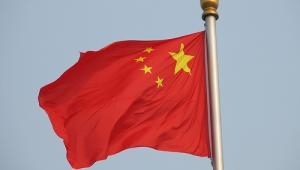
Here's proof that China's GDP obsession could be waning
But 2014 growth target could be unchanged.
According to OCBC Viewpoint, China’s top policy leaders concluded their four days’ Central Economic Work Conference on 13 Dec, setting the growth plan for next year.
Analyst believes the growth target no longer tops the leaders’ mind although market players tend to believe China may keep its growth target for 2014 unchanged at 7.5% to boost confidence and maintain the growth momentum.
Here's more:
There is no announcement on the highly watched growth target for next year, as expected. The polarized growth target (7% or 7.5%) will only be announced next March during the National People’s Congress.
China outlined six key tasks for 2014 including security in food supplies, industrial restructuring, debt risks management, balancing regional growth, improving citizen’s livelihood and opening up the economy.
However, unlike previous years, maintaining a stable economic growth no longer tops the key tasks. Instead, security in food supplies tops the major tasks for the first time.
Looking together with the recent revision of evaluation system on local government officials (China will assess the local government official not only based on GDP); it clearly signaled that Chinese leaderships are moving away from the GDP obsession.
On policy, China reiterated to maintain its prudent monetary policy and proactive fiscal policy unchanged, ending speculation that China may shift its fiscal policy from proactive to prudent.
Noted the speculation on fiscal policy has been one of the reasons causing China’s equity market to fall in the past week. However, given China is going to control and alleviate local government debt risk next year, the room for further proactive fiscal policy is likely to be capped.
In fact, fiscal policy has not been as proactive as expected in the past few months given that fiscal spending is less than expected. Moving forwards, we think China may run its proactive fiscal policy from the perspective of implementing tax incentives instead of more spending.
On the monetary policy front, even though China’s policy tone remained unchanged as prudent; the monetary policy is apparently tighter this year compared with that in 2012 due to the government’s campaign to clamp down on excessive leverage in the interbank market.
The tight bias may remain going into 2014 given China’s money supply growth M2 remains high at 14.2% at November, well above government’s target of 13% which was set in the beginning of the year.
























 Advertise
Advertise






